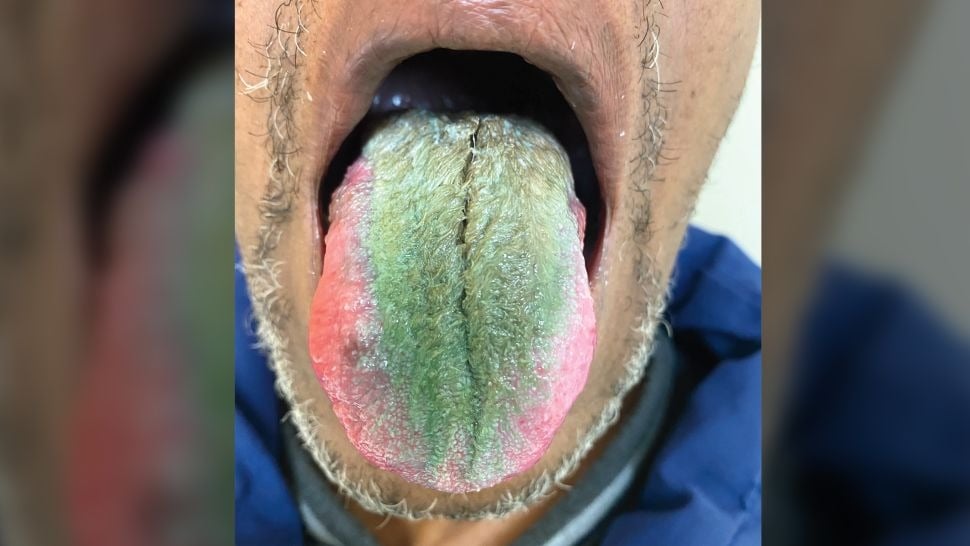
A 64-year-old man recently went for a medical checkup because something strange was happening to his tongue. It had started sprouting green fur that looked quite bizarre.
The man’s tongue had turned green approximately two weeks prior to his visit to the clinic. This change occurred shortly after he had completed a course of antibiotics for a gum infection.
At first, the doctors suspected it might be oral thrush, which is a type of fungal infection. They prescribed an antifungal treatment, hoping it would solve the problem. However, to their surprise, the moss-like growths persisted and the green color remained.
Diagnosis of the condition
Upon taking a closer look, the physicians noticed that the man’s filiform papillae, which are the small, cone-shaped bumps covering the tongue’s surface and giving it a rough texture, were longer than what is typically seen on a healthy tongue. They found no other indications of injury or disease, and the patient himself reported no pain or changes in his ability to taste.
In a recent case report published in the New England Journal of Medicine, physicians have officially diagnosed the man with hairy tongue, also known as lingua villosa. They explained that this is a harmless condition where hair-like growths of different colors sprout on the surface of the tongue.
These growths are supposed to shed naturally when they come into contact with rough objects like a toothbrush, tongue scraper, or solid and textured foods. However, in the case of hairy tongues, these papillae do not shed as they should.
Increased length of papillae
When the papillae are not regularly shed, they can grow to a remarkable length of up to 0.7 inches (18 millimeters). According to the American Academy of Oral Medicine, approximately 13% of people experience this condition at some point in their lives, with the majority of cases occurring in men and individuals over the age of 65.
As these bumps elongate, they take on the appearance of hair-like fibers. During this process, they tend to accumulate particles of food, bacteria, dead skin cells, and other debris, which contribute to the coloration of the furry tongue.
The American Academy of Oral Medicine explains that hairy tongue can exhibit different colors such as brown, white, green, or pink, depending on the underlying cause and other factors like mouthwashes or even certain types of candy.
Tell me about causes and treatment of this hairy green tongue? 🧵 nejm pic.twitter.com/3AFFF3qlfw
— Oren Gottfried, MD (@OGdukeneurosurg) June 29, 2023
Risk factors contributing to hairy tongue
Several risk factors contribute to the development of a hairy tongue, regardless of its color. These factors include consuming a soft diet and consuming large quantities of coffee, tea, or alcohol.
Smoking, dehydration, poor oral hygiene, and the use of certain oral medications that can alter the mouth’s microbial balance are also identified as risk factors in the case report. To prevent the elongation and discoloration of the papillae, it is recommended to regularly brush the tongue.
In the specific case of the patient with green fur on tongue, physicians advised him to gently scrub his tongue with a toothbrush four times a day and to quit smoking.
Remarkably, despite the patient’s continued smoking habit, the doctors reported that the appearance of his tongue had returned to normal during a follow-up examination after six months.
See all the latest news from Greece and the world at Greekreporter.com. Contact our newsroom to report an update or send your story, photos and videos. Follow GR on Google News and subscribe here to our daily email!



